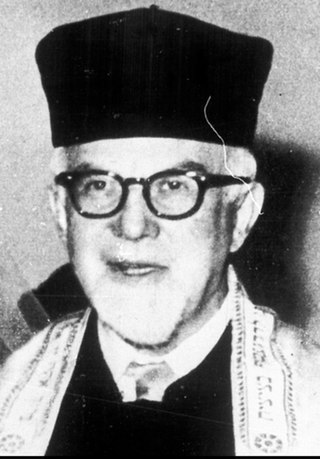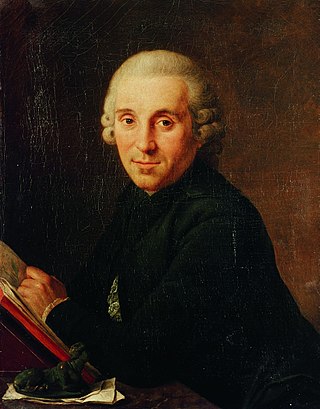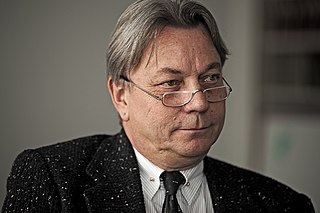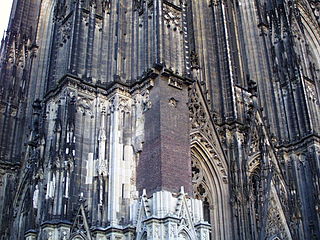
Adolf Kober was a rabbi and a historian.
Centrum Schwule Geschichte e. V., abbreviated CSG, is a German "LGBT" organization based in Cologne (Köln).

Ferdinand Franz Wallraf was a German botanist, mathematician, theologian, art collector and Roman Catholic priest. His collection formed the founding nucleus of the Wallraf–Richartz Museum.

Vincenz Statz was a Neo-Gothic German architect, mainly active in the Rhineland.

The Altenberger Dom is the former abbey church of Altenberg Abbey which was built from 1259 in Gothic style by Cistercians. Listed as a cultural heritage, it is located in Altenberg, now part of Odenthal in the Rheinisch-Bergischer Kreis, North Rhine-Westphalia, Germany. Until 1511, the church was the burial site of counts and dukes of Berg and the dukes of Jülich-Berg.
Hermann Claasen was a German photographer.
Theodor Friedrich Wilhelm Willi Kahl was a German musicologist.

Georg Quander is a German opera and film director, music journalist, writer and culture manager. From 1991 to 2002, he was artistic director of the Deutsche Staatsoper Berlin. From 2005 to 2013, he was councillor for arts and culture of the city of Cologne. Since 2018, he has been the artistic director of the Musikkultur Rheinsberg gGmbH.
Günther Binding is a German art historian and retired professor of art history and urban conservation at the University of Cologne.

Udo Mainzer is a German art historian and monument conservator. He held office until September 2011. as director of the LVR-Amt für Denkmalpflege im Rheinland and Landeskonservator of the Landschaftsverband Rheinland.
Willy Weyres was a German architect and academic teacher. He was Kölner Dombaumeister from 1944 to 1972, diocesan master builder for the Archdiocese of Cologne for more than ten years, and full professor of architectural history and monument preservation at the RWTH Aachen from 1955 until his retirement in 1972. Under his leadership, the Cologne Cathedral was restored and further developed after the Second World War.
Hans Wilhelm Hupp (1896–1943) was a German art historian, author and curator. From 1933 to 1943 he directed the Museum Kunstpalast of the city of Düsseldorf..

The Kölnische Stadtmuseum is the municipal history museum of Cologne, North Rhine-Westphalia, Germany. It is housed in the building of the historic Zeughaus with the adjacent Prussian Alte Wache Zeughaus.

The Cologne Cathedral quarter is the area immediately surrounding Cologne Cathedral in Cologne, North Rhine-Westphalia, Germany. When the Gothic cathedral was built, it was closely surrounded by houses and smaller churches. When the cathedral was completed in 1880 as a national symbol, it was freed from adjacent structures and stood isolated, unhampered by traffic. After the inner city was destroyed in World War II, it was rebuilt, with a pedestrian area connecting to the cathedral. In 1970, the Domplatte was constructed as a large concrete surface without steps around the cathedral, which became the location of major open-air events such as Carnival and pop concerts. The design of the cathedral surroundings has remained a challenge for urban planning.
The Taubenbrunnen is a fountain sculpture designed by Ewald Mataré and erected in 1953 in the Altstadt-Nord district of Cologne, situated directly in front of the west side of the Cologne Cathedral.

Nikolaus Friedrich was a German sculptor.

Odo Rumpf is a German sculptor working in Cologne.

Franz Joseph Esser was a German painter, watercolorist, caricaturist, draftsman and graphic artist who was both close to the Cologne Progressives and a member of the Nazi party.

The Cologne Cathedral Seal was a section of unclad brickwork which covered destroyed masonry on an exterior pillar of Cologne Cathedral. In November 1943, during an air raid by the allies, a bomb seriously damaged a pillar on the northern tower of the cathedral, sparking fears for the structural integrity of the surrounding parts of the building. The missing sandstone was replaced with bricks by the spring of 1944, which remained visible on the north tower for over 60 years. As the last major war damage, the seal was repaired between 1995 and 2005 and faced with cut stone. Some experts had argued that the seal should be left undisguised as an anti-war memorial.
Kurt Neven DuMont was a German newspaper publisher and Nazi Party member.














